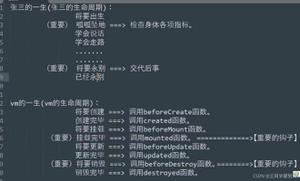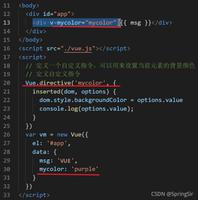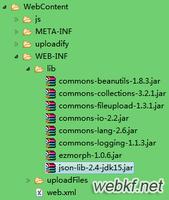Vue生命周期和钩子函数及使用keeplive缓存页面不重新加载

Vue生命周期
每个Vue实例在被创建之前都要经过一系列的初始化过程,这个过程就是vue的生命周期,在这个过程中会有一些钩子函数会得到回调
- Vue中能够被网页直接使用的最小单位就是组件,我们经常写的:
var vm = new Vue({ el: '#app',
......
}
是根组件,el指定了它挂载到哪里(id为app的元素包裹的部分)
也可以跟普通组件一样这样写:
var vm = new Vue({ ......
}
vm.$mount("#app");
也可以跟普通组件一样在里面定义template属性指定模板,比如
new Vue({ el: '#app',
router,
components: { App },
template: '<App/>',
methods:{
}
})
根组件里面可使用子组件,并起一个名字:
var vm = new Vue({ ......
components: {
'my-components': child
}
}
vm.$mount("#app");
这样就可以在id为app的div中使用名字my-components来引用child组件
div > ......
<my-components :msg="msg1" v-if="show"></my-components>
......
</div>
- beforeCreate:在实例初始化之后,这时候el 和 data 并未初始化
- created:实完成了 data 数据的初始化,但Vue 实例使用的根 DOM 元素el还未初始化
- beforeMount:data和el均已经初始化,el并没有渲染进数据,el的值为“虚拟”的元素节点
- mounted:此时el已经渲染完成并挂载到实例上
使用keeplive缓存组件视图
有时候我们显示页面的时候不需要重新加载,使用上次的缓存页面即可,比如单页面应用使用路由进行页面切换时,再切回来,很多时候并不需要重新加载
<!DOCTYPE html><html lang="en">
<head>
<meta charset="UTF-8">
<title>Title</title>
<script src="https://cdn.jsdelivr.net/npm/vue@2.5.16/dist/vue.js"></script>
</head>
<body>
<div >
<p>{{message}}</p>
<keep-alive>
<my-components msg="hello" v-if="show"></my-components>
</keep-alive>
</div>
</body>
<script>
var child = {
template: '<div><input></input></div>',
props: ['msg'],
data: function() {
return {
childMsg: 'child'
};
},
created: function() {
console.log('child reated!');
},
mounted: function() {
console.log('child mounted!');
},
deactivated: function() {
console.log('component deactivated!');
},
activated: function() {
console.log('component activated');
}
};
var app = new Vue({
el: '#app',
data: function() {
return {
message: 'father',
show: true
};
},
components: {
'my-components': child
}
});
</script>
</html>
被keeplive包裹的组件会使用缓存,我们可以在input里输入文字
在控制台控制app.show=false,再app.show=true,可以发现前一次输入的文字还在,说明使用了缓存
deactivated、activated两个方法只在被keeplive包裹的组件中才会回调,deactivated在组件消失时调用,activated在组件显示时调用
综合示例
<!DOCTYPE html><html lang="en">
<head>
<meta charset="UTF-8">
<meta name="viewport" content="width=device-width, initial-scale=1.0">
<meta http-equiv="X-UA-Compatible" content="ie=edge">
<title>Document</title>
<script src="https://cdn.bootcss.com/vue/2.4.2/vue.js"></script>
<style>
</style>
</head>
<body>
<div >
<p>{{message}}</p>
<keep-alive>
<my-components :msg="msg1" v-if="show"></my-components>
</keep-alive>
</div>
</body>
<script>
var child = {
template: '<div>from child: {{childMsg}}</div>',
props: ['msg'],
data: function() {
return {
childMsg: 'child'
}
},
beforeCreate: function() {
debugger;
},
created: function() {
debugger;
},
beforeMount: function() {
debugger;
},
mounted: function() {
debugger;
},
deactivated: function() {
alert("keepAlive停用");
},
activated: function() {
console.log('component activated');
},
beforeDestroy: function() {
console.group('beforeDestroy 销毁前状态===============》');
var state = {
'el': this.$el,
'data': this.$data,
'message': this.message
}
console.log(this.$el);
console.log(state);
},
destroyed: function() {
console.group('destroyed 销毁完成状态===============》');
var state = {
'el': this.$el,
'data': this.$data,
'message': this.message
}
console.log(this.$el);
console.log(state);
},
};
var vm = new Vue({
el: '#app',
data: {
message: 'father',
msg1: "hello",
show: true
},
beforeCreate: function() {
debugger;
},
created: function() {
debugger;
},
beforeMount: function() {
debugger;
},
mounted: function() {
debugger;
},
beforeUpdate: function() {
alert("页面视图更新前");
},
updated: function() {
alert("页面视图更新后");
},
beforeDestroy: function() {
console.group('beforeDestroy 销毁前状态===============》');
var state = {
'el': this.$el,
'data': this.$data,
'message': this.message
}
console.log(this.$el);
console.log(state);
},
destroyed: function() {
console.group('destroyed 销毁完成状态===============》');
var state = {
'el': this.$el,
'data': this.$data,
'message': this.message
}
console.log(this.$el);
console.log(state);
},
components: {
'my-components': child
}
});
</script>
</html>
- debugger用于在chrome中加载时自动断点
- 根组件的调用中:
beforeCreate执行时,data和el均为undefined
created执行时,data已经初始化,el为undefined
beforeMount执行时,data和el均已经初始化,此时el并没有渲染进数据,
此时用console.log(this.$el);打印el,p元素内容还是{{message}},还没有替换为真实的数据
el指定组件挂载的地方,如果组件没有定义template,vue就会把el对应元素包裹的块拿出来渲染(比如data数据渲染)后再放回去,el对象可以操作里面的各个html子节点,如果指定了template,就会渲染template再挂载到el里面mounted执行时,此时el已经渲染完成并挂载到实例上
- 加载渲染调用顺序:
父beforeCreate->父created->父beforeMount->子beforeCreate->子created->子beforeMount->子mounted->子activated(如果是缓存视图)->父mounted->父activated(如果是缓存视图)
- 控制根组件更新
控制台输入vm.msg1 = "123"
数据变化之前会调用beforeUpdate,更新后调用updated,这两个方法只有在更新数据的时候才调用(包括隐藏或显示组件,不管是不是缓存视图)
- 控制子组件更新
vm.$children[0].childMsg = "111"
只会调用自己的beforeUpdate和updated,跟父组件无关
- 控制子组件隐藏显示:
隐藏:
父beforeUpdate->子deactivated(如果是缓存视图)->父updated
显示:
父beforeUpdate->子activated(如果是缓存视图)->父updated
- 销毁流程
vm.$destroy()
父beforeDestroy->子deactivated(如果是缓存视图)->子beforeDestroy->子destroyed->父destroyed
以上是 Vue生命周期和钩子函数及使用keeplive缓存页面不重新加载 的全部内容, 来源链接: utcz.com/z/376078.html









